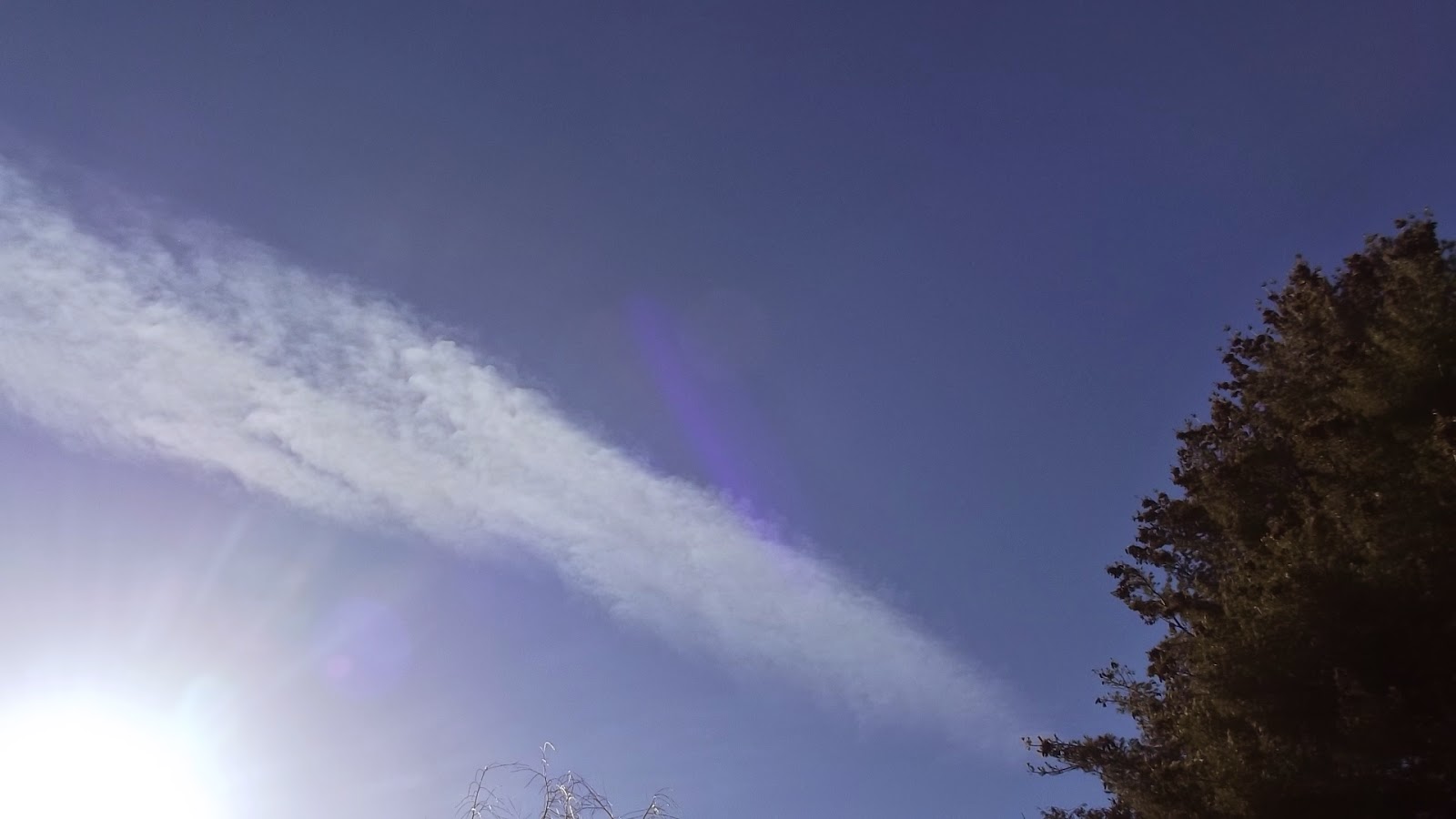Anyone who studies and writes about aircraft clouds realizes there is a need for a new vocabulary for contrail studies and descriptions. Roland Nunez from Embry-Riddle Aeronautical University in an
interesting paper that was published in 2014, writes about this. He also used the term
'areotrails', a contraction of
aerosol trails, basically the unseen soot pollutants in
aircraft exhaust. These invisible trails may explain why some
persistent trail clouds are larger, spread wider or last longer than other persistent aviaticus trails. All jets leave aerotrails and there were over
37,000,000 flights scheduled last year, 37 million invisible areotrails! This does not include private, scientific and military flights.
When
aviaticus (aircraft) clouds are formed, are the nuclei of which the water vapor attach to and form ice crystals natural atmospheric nuclei such as volcanic particles? Or are they from the soot particles? A combination of both? I would guess the combination of both. In a cold high humidity area of the upper atmosphere that is also saturated with natural nuclei, wouldn't the extra nuclei introduced from the jet exhaust cause the formation of more ice crystals and thus a more robust cloud? Then as the trail clouds drift and mix into even higher humidity and colder areas or areas with higher natural nuclei, couldn't the clouds continue to expand? Is it possible some of the
cirrus clouds we see and assume are natural, are formed when invisible aerotrails drift into and mix with atmosphere that is more conducive for cirrus formation but lacking natural nuclei? Could the mix of natural and aircraft exhaust nuclei explain the milky clouds
(cirrostratus aviaticus) during heavy contrail events?
No contrail forecast for central Wisconsin today. Even though it did not look like the conditions were right for aviaticus formations, the weather forecast was for cloud cover anyway. We did start out with a nice AM 'blue out', with not one whiff or needle of trail. But just before the cloud front moved in a few segments of persistent aviaticus trails were seen.
http://theorioninitiative2.blogspot.com/2015/04/aerotrails-clue-to-why-some-contrails.html

















































